So the first part to cover should be the idea that there is a perfect position for every golfer to achieve at the top of their swing. The impression I’m given is if the club is parallel at the top then its perfect. Aesthetically this might be true but as far as affecting the distance and direction of your shots there’s more than one way to do it and there is a way that suits you better.
Look at the following swings… we’ve got super long – past parallel, through to short half swing styles. Both winners and both super efficient.
Now is your chance to explore what is right for you. This is where you need to get it right. Here are some of the differences between longer and shorter swing
 Longer swings are typically more powerful, based on the fact that the further the clubs swings back the more scope we have to pick up speed on the way back to the ball. There isn’t a World Long Drive competitor that I can find who swings it short of parallel. However if you aren’t physically capable of housing this length of swing and it makes you move to a position of weakness (even risk injury)… you’re not going to produce power or consistency. So the question is if you make your swing longer are you going to give up precision in strike and how you deliver your club head?
Longer swings are typically more powerful, based on the fact that the further the clubs swings back the more scope we have to pick up speed on the way back to the ball. There isn’t a World Long Drive competitor that I can find who swings it short of parallel. However if you aren’t physically capable of housing this length of swing and it makes you move to a position of weakness (even risk injury)… you’re not going to produce power or consistency. So the question is if you make your swing longer are you going to give up precision in strike and how you deliver your club head?
Shorter Swings generally have more precision, offering better strike, direction consistency and easier to repeat. This can come at the cost of distance. This trade off needs to be evaluated.
How you can control the length of YOUR swing
The biggest thing we cover in lesson is how golfers control the length of their swing. For example here are a number of ways to make a swing longer/shorter…
- Creating a bigger shoulder turn.
- Using your wrists to hinge (Radial Deviation)
- Allowing your arms to collapse (hinging of your elbows)
- Moving your arms vertically in the swing
- Allowing your lead arm to come closer to your chest
- Turning your hips in the backswing
- Allowing your lead foot off the ground
- Early extension of the hips/spine
Depending on physical limitations some of the above movements will suit you better than others. The length of swing you create will always have an effect on your sequencing and impact factors.
Impact Factors
– Clubhead Speed
– Club Path
– Centredness of Strike
– Angle of Attack
– Clubface Alignment
Conclusion
If making your swing longer will add 30 yards in length but make you only 10% wider in dispersion then it is definitely worth the change. If you only find 10 yards but are 20% wider in dispersion then i would revert to your more controlled version of your swing. The trade off has to be worth it. In my experience I would forget about the aesthetic value of your golf swing and look deeper in to the results if you’re looking to improve your scores.
Rob Wilkinson
PGA Professional
rob.nfgc@btinternet.com




